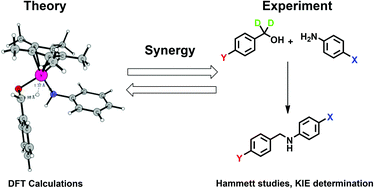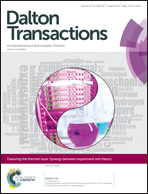Synergy between experimental and theoretical methods in the exploration of homogeneous transition metal catalysis
Abstract
In this Perspective, we will focus on the use of both experimental and theoretical methods in the exploration of reaction mechanisms in homogeneous transition metal catalysis. We briefly introduce the use of Hammett studies and kinetic isotope effects (KIE). Both of these techniques can be complemented by computational chemistry – in particular in cases where interpretation of the experimental results is not straightforward. The good correspondence between experiment and theory is only possible due to recent advances within the applied theoretical framework. We therefore also highlight the innovations made in the last decades with emphasis on dispersion-corrected DFT and solvation models. The current state-of-the-art is highlighted using examples from the literature with particular focus on the synergy between experiment and theory.

- This article is part of the themed collection: Synergy between Experiment and Theory

 Please wait while we load your content...
Please wait while we load your content...